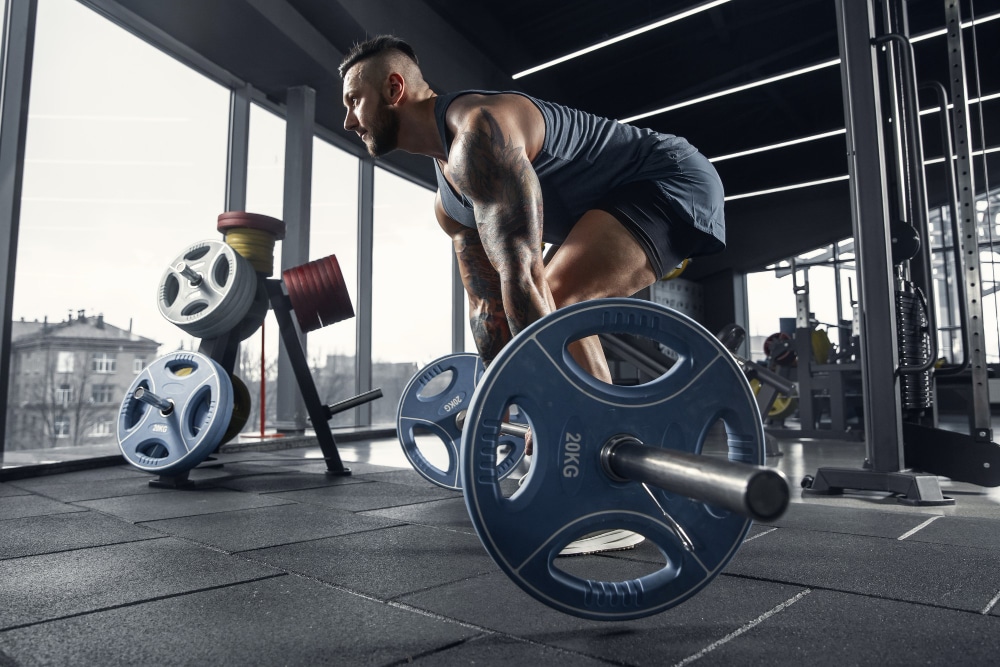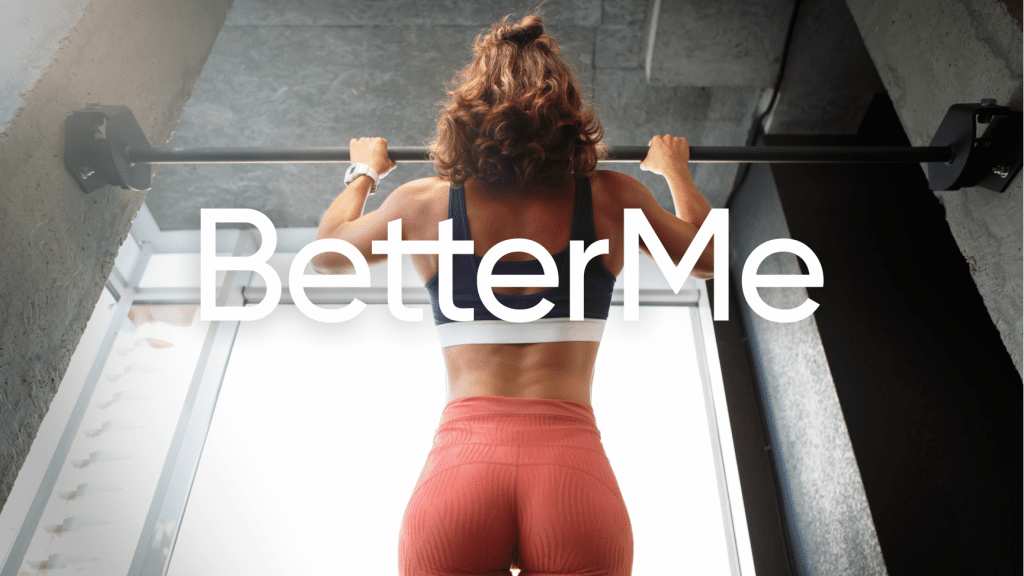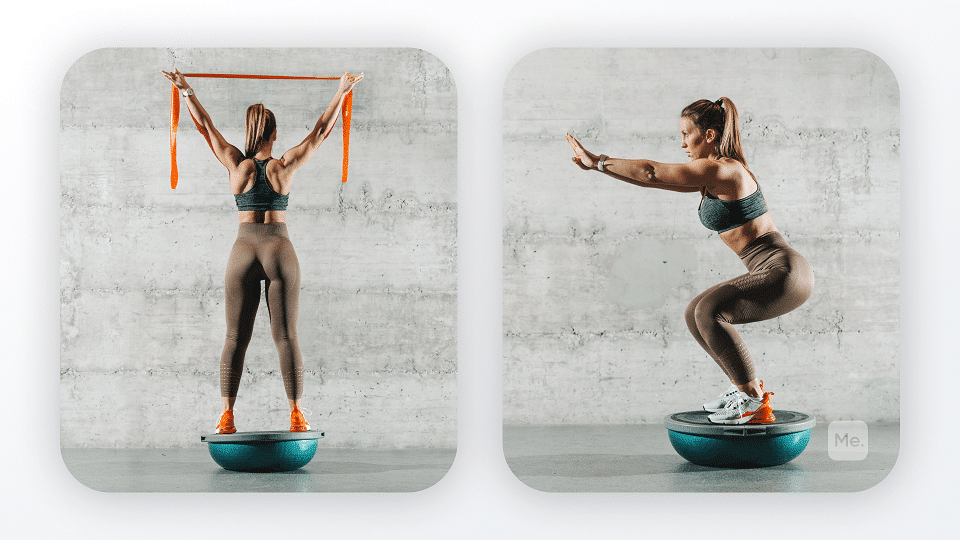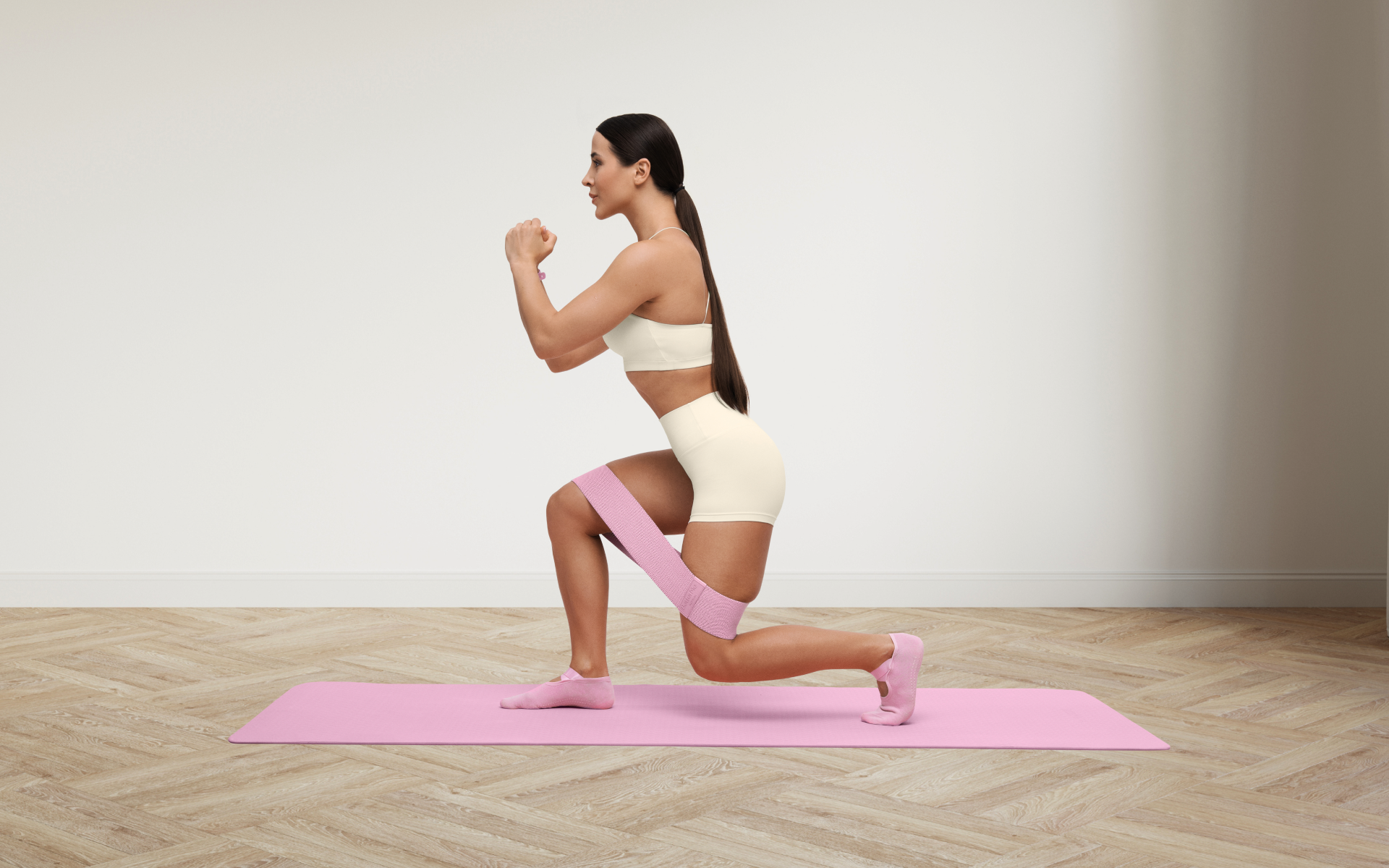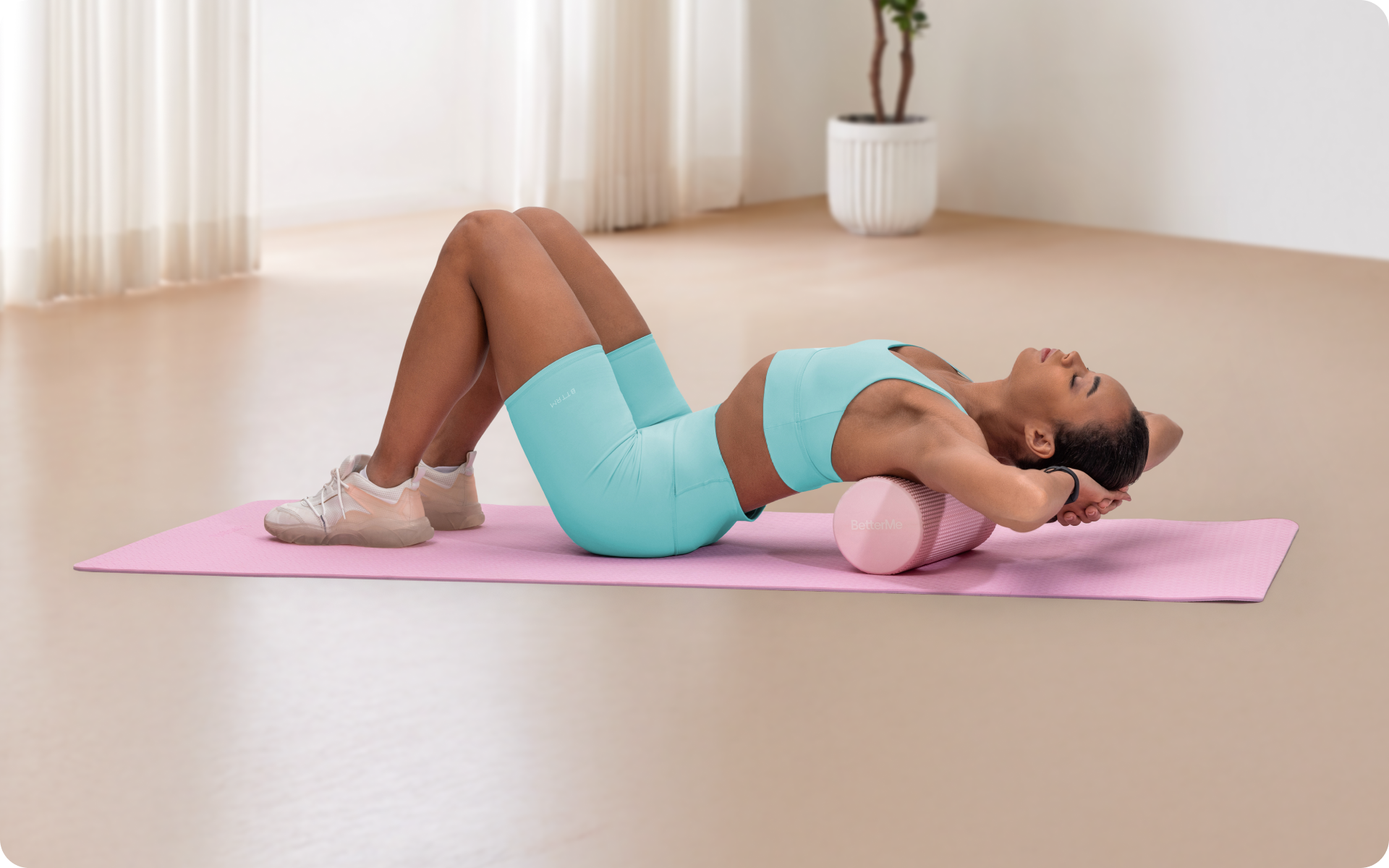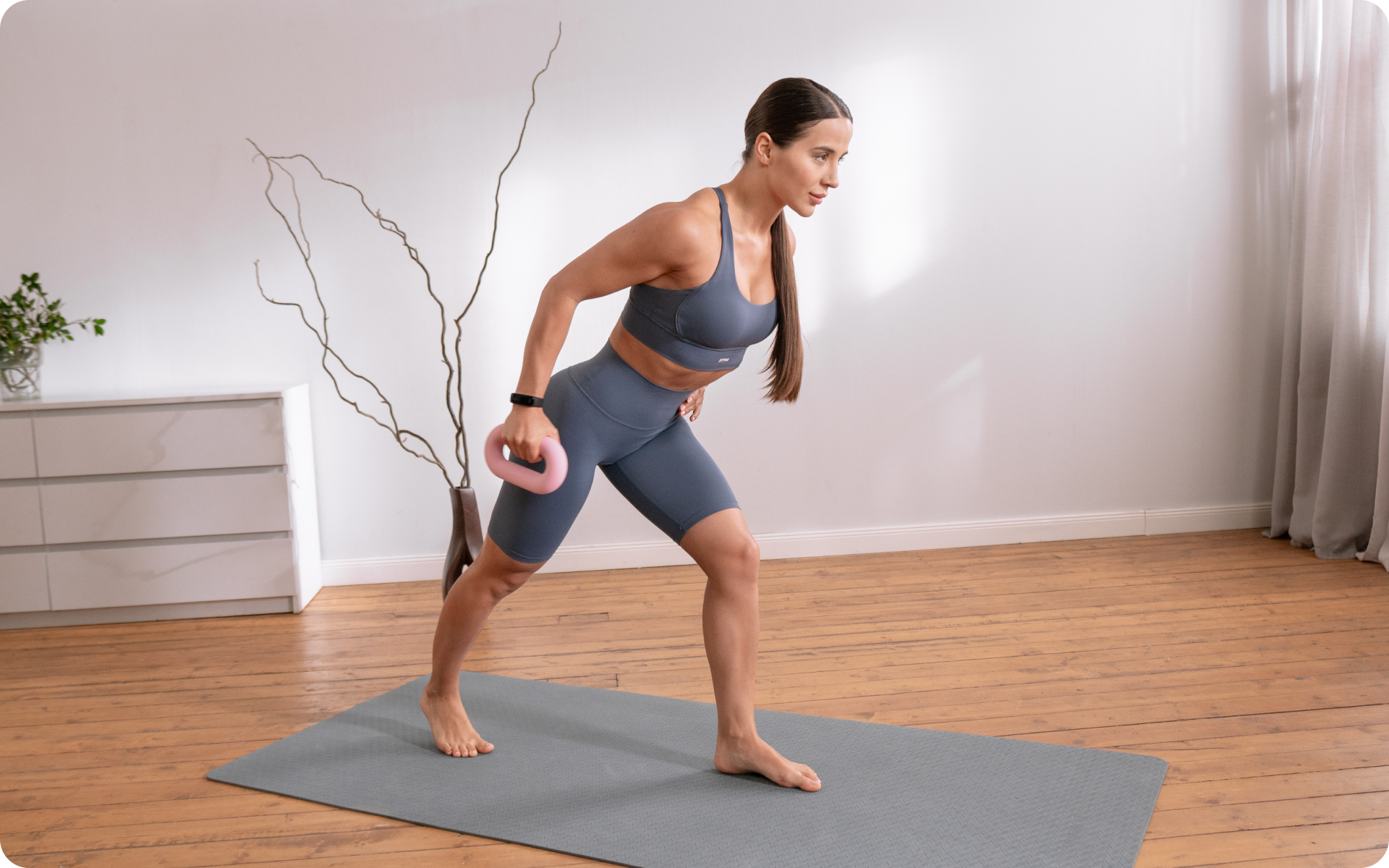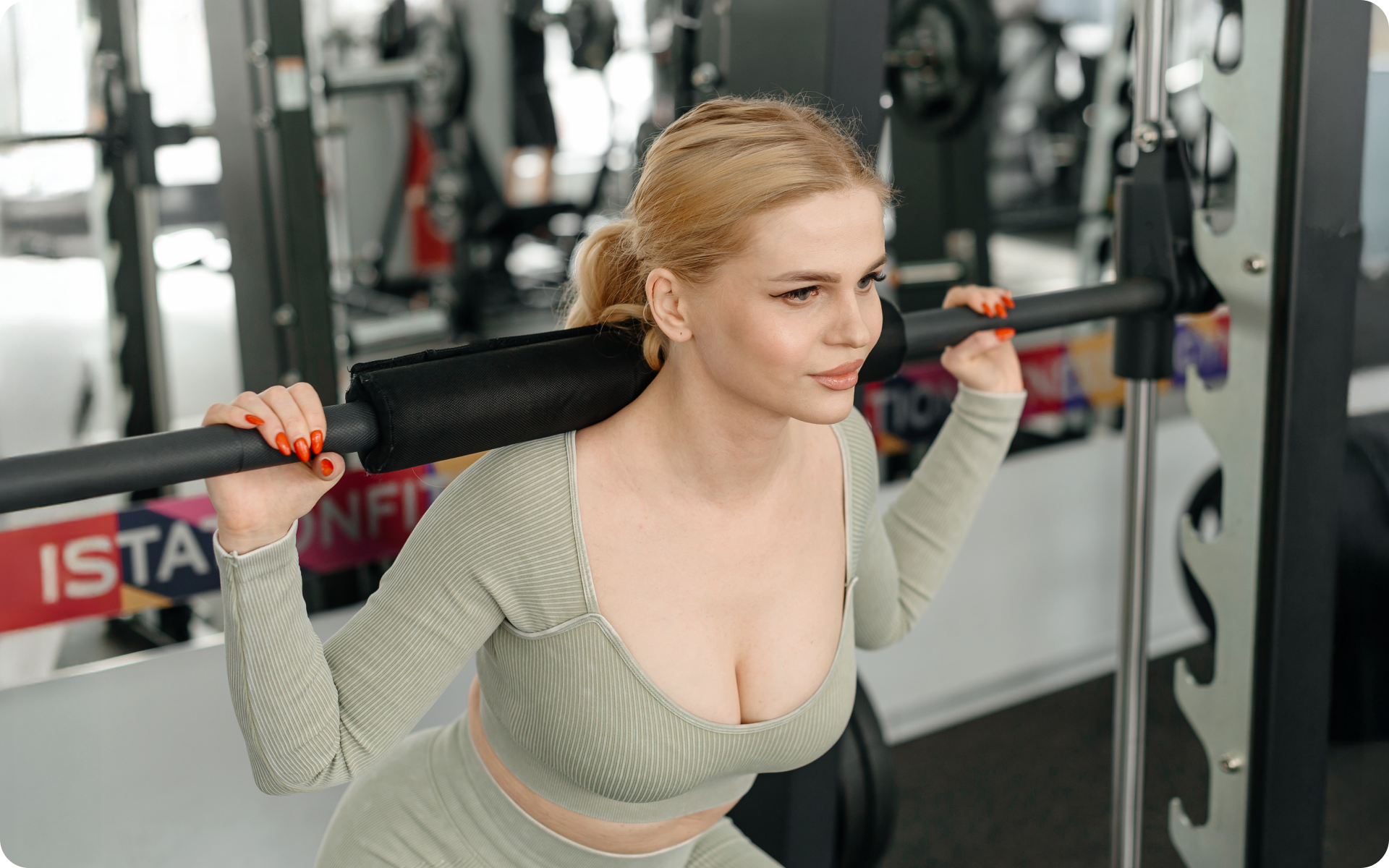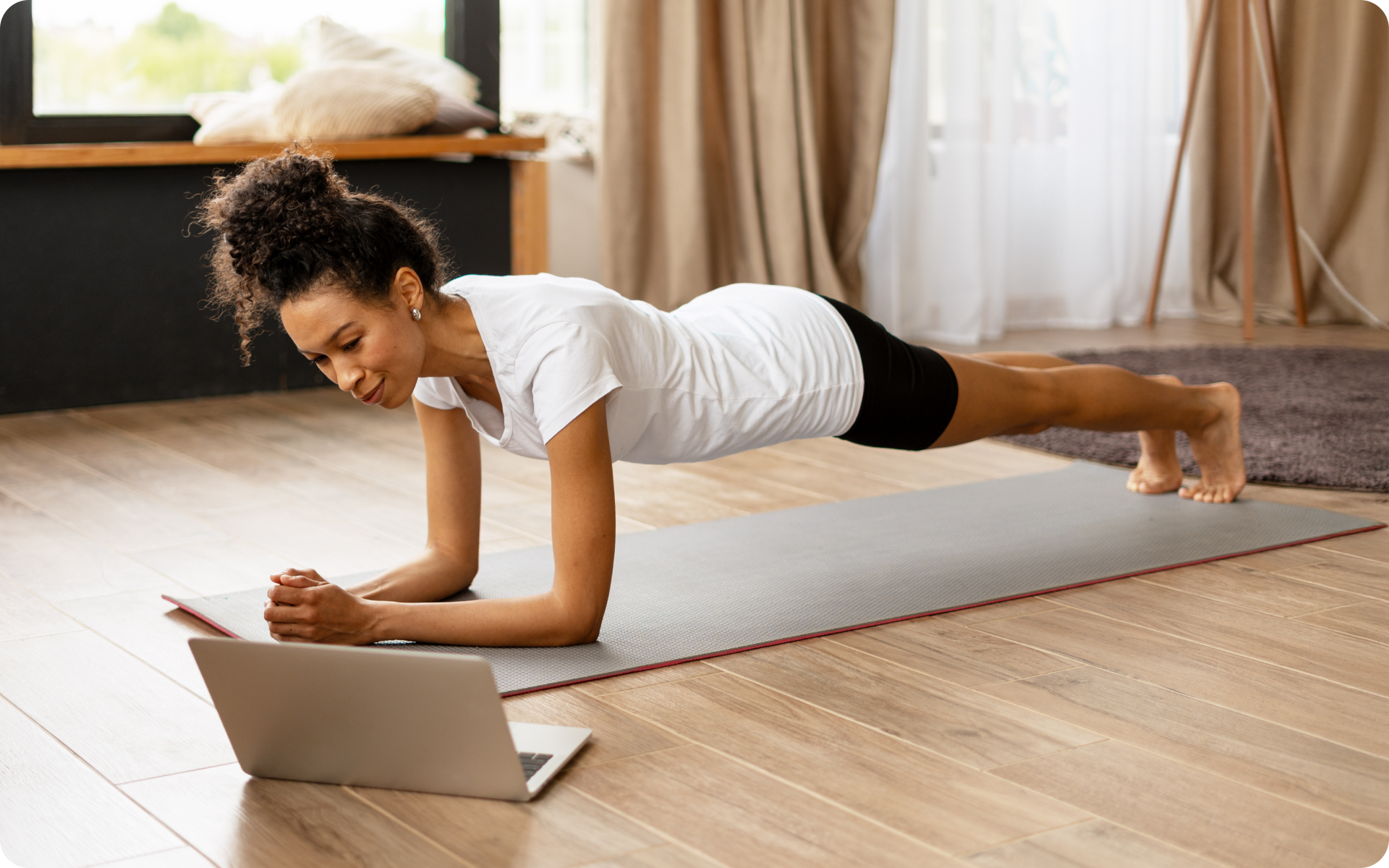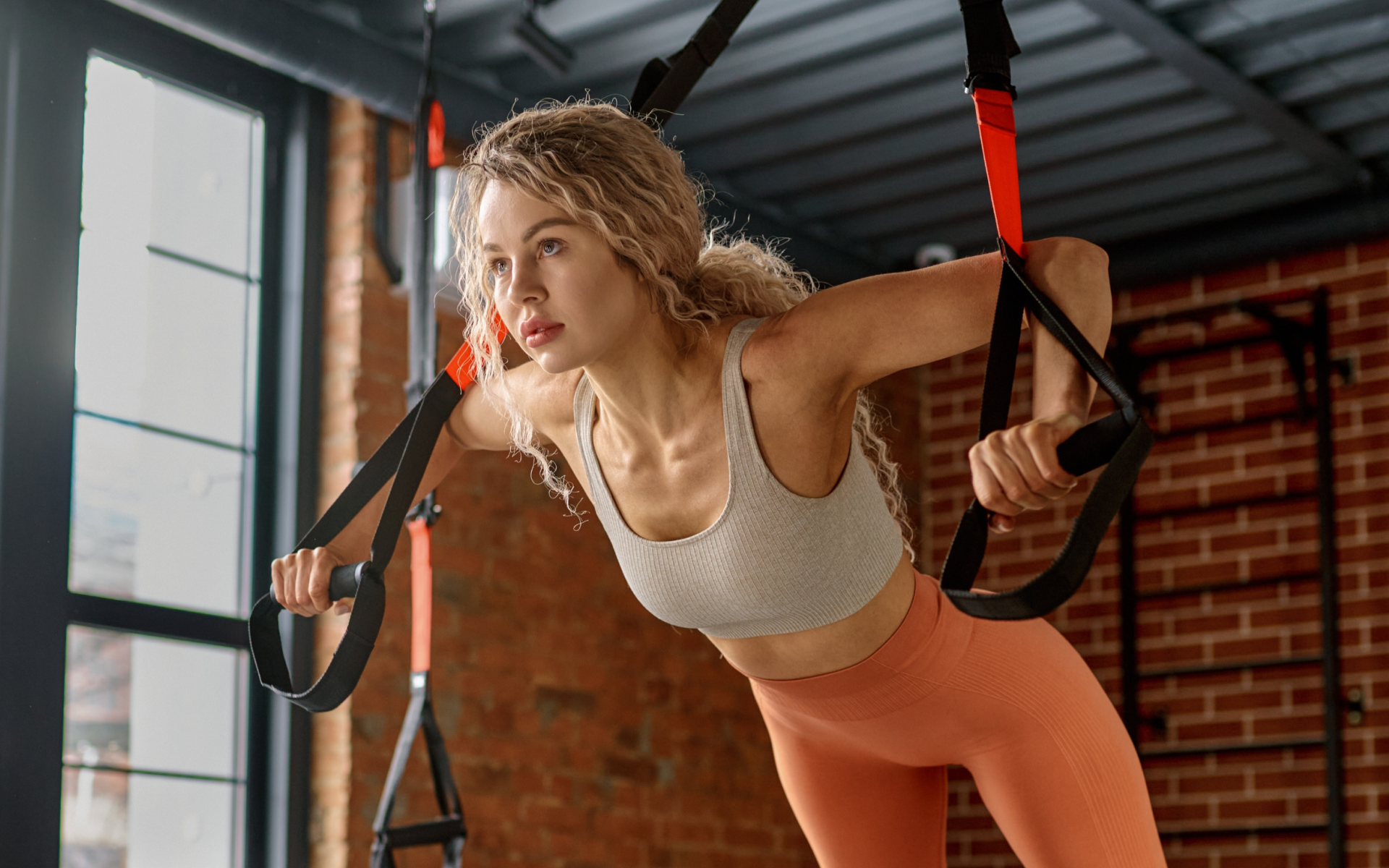Weightlifting is a sport that requires split-second timing, explosive power, and perfect technique. It’s also a sport that comes with a high risk of injury. This is why Olympic weightlifters train so hard to perfect their craft. If you want to lift like an Olympian, you need to follow a weightlifting program that is specifically designed to improve your performance and minimize your risk of injury. In this article, we’ll share a few tips on how to create an Olympic weightlifting program that will help you achieve your ultimate gains. We’ve also included the basic principles of Olympic weightlifting so you can understand the sport a little better.
Get your personalized
meal plan!
How Does Olympic Weightlifting Work?
The premise of Olympic weightlifting is simple — build as much strength and power as possible to lift the heaviest weights possible. The goal is to complete two types of lifts, the snatch and the clean and jerk, without dropping the barbell or failing to complete the lift.
Olympic weightlifting is a total-body sport that requires explosive power, coordination, and balance.
In the long run, it offers the following benefits:
1. General Physical Preparedness
One of the main benefits of Olympic weightlifting is that it helps you become more prepared for physical activities.
When you engage in regular weightlifting activities, you improve your body’s overall conditioning. This, in turn, makes you better equipped to participate in other sports or activities.
Whether you’re looking to simply pep up your fitness routine, jazz up your diet with mouth-watering low-calorie recipes or want to get your act together and significantly drop that number on your scale – BetterMe app has got you covered! Improve your body and revamp your life with us!
2. Increased Muscle Hypertrophy
Muscle hypertrophy is the scientific term for muscle growth.
When you engage in weightlifting activities, your muscles are put under a lot of stress. In response to this stress, your muscles will grow larger and stronger (7). This is why Olympic weightlifters are often some of the most muscular athletes in the world.
3. Improved Mobility And Flexibility
Mobility is the ability to move your joints through their full range of motion (5). Flexibility is the ability to stretch your muscles (6). Both are important for overall physical health and performance.
Weightlifting can improve your mobility and flexibility in two ways (3). First, it strengthens the muscles that surround your joints. This helps stabilize your joints and improve your range of motion. Second, it lengthens your muscles. When your muscles are strong and flexible, you can move your joints through their full range of motion with ease.
4. Neural Adaptations
Neural adaptations refer to changes in the nervous system that occur in response to exercise. When you lift weights, your body adapts by becoming more efficient at sending signals to your muscles. This results in improved muscle coordination and movement (9).
5. Enhanced Cardiovascular And Muscle Endurance
Weightlifting can also improve your cardiovascular and muscle endurance, especially when done alongside endurance training (12). When you lift weights, your heart rate increases and your muscles work harder.
Over time, your heart and muscles become more efficient at using oxygen to produce energy. This results in improved endurance.
Creating A Beginners Olympic Weightlifting Program
If you’re new to Olympic weightlifting, follow these basic tips to create a weightlifting program that will help you achieve your goals:
1. Classify Your Abilities
Are you a beginner, intermediate, or advanced weightlifter? This will determine the type of program you should follow.
A beginner is someone who has never lifted weights before or someone who has been lifting weights for less than 6 months.
An intermediate weightlifter is someone who has been lifting weights for 6 months to 1 year.
An advanced weightlifter is someone who has been lifting weights for more than 1 year.
You can also classify your abilities according to the standards found in “Weightlifting Programming: A Winning Coach’s Guide” by USA Weightlifting coach and author, Bob Takano.
In this guide, Takano classifies athletes based on their abilities in the snatch and clean and jerk.
- Class III (novice): This class is for athletes who can only complete the movement with very light weights.
- Class II (novice-intermediate): This class is for athletes who have a basic understanding of the movement as well as basic strength and techniques. They can complete the movement with light to moderate weights.
- Class I (intermediate-advanced): This class is for athletes who have a good understanding of the movement and are strong enough to complete the movement with heavy weights.
2. Select Your Exercises
Exercise selection is important for two reasons. First, you want to make sure you’re using exercises that will help you achieve your specific goals. Second, you want to make sure you’re using exercises that you’re able to perform safely and effectively.
If you’re a beginner, start with the basic Olympic lifts: the snatch and the clean and jerk. As you become more comfortable with these lifts, you can add in additional exercises, such as the power snatch, power clean, and push jerk.
If you’re an intermediate or advanced weightlifter, you can include a wider variety of exercises in your program. In addition to the basic Olympic lifts, you can also add in exercises, such as the power snatch, power clean, push jerk, split jerk, and overhead squat.
What Are The 6 Olympic Lifts?
A great Olympic weightlifting program will include the six main lifts that are contested in the sport of weightlifting.
These are:
- The Snatch: A single-move lift that starts with the barbell on the ground and ends with it overhead.
- The Clean: A single-move lift that starts with the barbell on the ground and ends with it at your shoulders.
- The Jerk: A single-move lift that starts with the barbell at your shoulders and ends with it overhead.
- The Back Squat: A multi-joint exercise that works your quads, glutes, and hamstrings.
- The Front Squat: A multi-joint exercise that works your quads, glutes, and hamstrings.
- Pull Movements: Pulling movements like the clean pull and the snatch pull work your back muscles and help you generate more power in your Olympic lifts.
3. Schedule Your Program To Allow Recovery
The frequency of your training sessions matters just as much as the exercises you include in your program. If you train too frequently, you risk overtraining and injury (8). If you don’t train frequently enough, you won’t make the progress you’re hoping for.
As a general rule of thumb, beginners should train 3 to 4 times per week, while intermediate and advanced weightlifters should train 4 to 6 times per week.
Keep in mind that your body needs time to recover between training sessions. Make sure to schedule at least 1 to 2 days of rest per week into your program.
4. Use Progression To Continually Challenge Yourself
To see results from your weightlifting program, you need to continually challenge yourself. The best way to do this is by continually increasing the intensity (the amount of loading relative to your 1RM) and/or the volume (the number of sets and reps) of your training.
For example, you might start your program by lifting 80% of your 1RM for 5 sets of 5 reps. Once you can consistently complete all 5 sets at 80%, you would then increase the intensity to 85% for 5 sets of 5 reps.
Rather than adding weight to the bar, beginners should focus more on moving weights with integrity, positional awareness, and control. More experienced lifters can focus on heavier weights and/or increasing volume over time as their bodies can handle the additional stress.
Training volume is another aspect of progression. It refers to the total amount of work you’re doing in a training session and is typically measured by the number of sets and reps you complete.
For example, you might start your program by completing 5 sets of 5 reps (5×5) for each of your Olympic lifts. Once you can consistently complete all 5 sets at the same weight, you would then increase the volume by adding a set (6×5).
Read More: How To Increase Stamina For Running: 10 Expert-Approved Tips
5. Periodize Your Training To Peak For Important Competitions
Periodization is the process of planning your training in cycles or periods, to peak for important competitions (2).
A well-designed periodized program will help you avoid overtraining, injuries, and burnout. It will also help you make continual progress in your strength and technique.
There are a variety of different types of periodization programs, but all follow a similar basic structure. They typically include 4 to 6-week microcycles, which are then grouped into larger mesocycles and macrocycles.
- Microcycles: The shortest training cycle, lasting 4 to 6 weeks.
- Mesocycles: A group of 2 to 3 microcycles, typically lasting 8 to 12 weeks.
- Macrocycles: A group of 2 to 3 mesocycles, typically lasting 12 to 24 weeks.
The specific exercises and training volumes you include in each microcycle will depend on your goals and the time of year.
For example, if you’re training for a competition that’s 6 months away, you might start by including more volume in your program (higher reps and sets), and then transition to more intensity as the competition gets closer (lower reps and heavier weights).
Note that this step is not necessary for beginners. As a beginner, you can just follow a linear progression program (increasing the intensity and/or volume of your training each week).
6. Use Sports Psychology To Improve Your Performance
Our mind is a powerful tool, and proper mental training can help you reach your full potential as a weightlifter.
There are a variety of different mental training techniques you can use, but some of the most effective include visualization, goal setting, and self-talk (11).
Visualization is a technique where you picture yourself successfully completing a lift in your mind. This helps program your nervous system for success and can increase your confidence on competition day.
If you struggle to even flirt with the idea of giving up your favorite foods or working out till your legs give way – BetterMe app is here to breathe a fresh perspective into the way you view the weight loss process! Check out the app and experience the fun side of fitness and dieting with BetterMe!
Goal setting is another important technique. You should have specific, measurable, attainable, relevant, and time-bound goals for your training. This will help you stay motivated and focused on the task at hand.
Self-talk is the process of talking to yourself positively. This can help you stay calm and focused under pressure, and overcome any negative thoughts or doubts that might pop up.
7. Work With A Qualified Coach
Working with a qualified coach is one of the best things you can do to improve your weightlifting. A good coach will be able to individualize your program to meet your specific needs, help you overcome any technique faults, and give you the mental support you need to succeed.
When choosing a coach, make sure they have experience working with athletes of your level and goals. They should also be certified by a reputable organization, such as USA Weightlifting (USAW).
4-Day Beginner Weight Lifting Schedule Sample
Below is a sample of a 4-day Olympic weightlifting schedule for beginners. This program includes 4 days of lifting and 3 days of rest or active recovery.
Day 1
- Squat Jump 3×8 at 20% squat RM
- Block Power Snatch 5×3
- BTN Snatch Push Press 3×5
- Squat 3×5 at 70% squat RM
- Strict Pull-Up 4×8
- Seated Overhead Press 4×8
Day 2
- Box Jump 3×8
- Muscle Clean 5×3
- Power Jerk 3×5
- Block Snatch Pull 3×5
- Belt Squat 3×12
- Single Leg RDL 3×12
Day 3
- Split Squat Jumps 3×5/leg (10 total)
- Snatch High Pull + Muscle Snatch + Overhead Squat 5×2+2+1
- Drop Snatch 3×5
- Front Squat 3×5
- Single Arm Dumbbell Row 4×8
- Dips / Push Ups 4×8
Day 4
- Box Jump 3×8
- Block Power Clean 5×3
- Push Press 3×5
- Clean Deadlift 3×5
- Walking Lunge 3×20 steps
- Waiters Carry 3×20 steps
Read More: Flat Stomach 30 Day Ab Challenge To Tone And Strengthen Your Abs And Overall Body
Recovery Tips For Olympic Weightlifters
The effectiveness of your weightlifting program depends not only on the exercises and training methods you use but also on your ability to recover from workouts.
There are three major types of recovery methods: active recovery, passive recovery, and sleep (4).
Active recovery refers to low-intensity activities that help increase blood flow and reduce muscle soreness. Some examples of active recovery activities include walking, light jogging, and easy cycling (1).
Passive recovery methods are those that do not require any physical activity, such as icing, foam rolling, and massage (1).
Sleep is an important but often overlooked recovery method. Aim for 7 to 9 hours of sleep each night to give your body the time it needs to recover and grow (10).
Finally, pay attention to other factors that may affect the effectiveness of your program:
- Nutrition: Eating a well-balanced diet with adequate calories and protein will help to support your training.
- Stress: Too much stress can lead to overtraining and burnout. Make sure to take time for yourself outside of the gym to relax and de-stress.
- Consistency: It’s important to be consistent with your training to see results. This means showing up for every workout and giving it your all.
The Bottom Line
Olympic weightlifting is a great way to build strength, power, and explosiveness. If you’re new to the sport, it’s important to start slowly and progress gradually.
Work with a qualified coach and use proper techniques to avoid injury. Moreover, don’t forget to focus on recovery— it’s just as important as the training itself.
DISCLAIMER:
This article is intended for general informational purposes only and does not serve to address individual circumstances. It is not a substitute for professional advice or help and should not be relied on for making any kind of decision-making. Any action taken as a direct or indirect result of the information in this article is entirely at your own risk and is your sole responsibility.
BetterMe, its content staff, and its medical advisors accept no responsibility for inaccuracies, errors, misstatements, inconsistencies, or omissions and specifically disclaim any liability, loss or risk, personal, professional or otherwise, which may be incurred as a consequence, directly or indirectly, of the use and/or application of any content.
You should always seek the advice of your physician or other qualified health provider with any questions you may have regarding a medical condition or your specific situation. Never disregard professional medical advice or delay seeking it because of BetterMe content. If you suspect or think you may have a medical emergency, call your doctor.
SOURCES:
- An Evidence-Based Approach for Choosing Post-exercise Recovery Techniques to Reduce Markers of Muscle Damage, Soreness, Fatigue, and Inflammation: A Systematic Review With Meta-Analysis (2018, frontiersin.org)
- CURRENT CONCEPTS IN PERIODIZATION OF STRENGTH AND CONDITIONING FOR THE SPORTS PHYSICAL THERAPIST (2015, ncbi.nlm.nih.gov)
- Effects of Different Number of Sets of Resistance Training on Flexibility (2017, ncbi.nlm.nih.gov)
- Exploring the Science of Muscle Recovery (n.d., blog.nasm.org)
- Flexibility (n.d., physio-pedia.com)
- Mobility vs Flexibility – What’s the Difference? (2021, issaonline.com)
- Muscle hypertrophy and muscle strength: dependent or independent variables? A provocative review (2020, ncbi.nlm.nih.gov)
- Overtraining Syndrome (2012, ncbi.nlm.nih.gov)
- Physiological and Neural Adaptations to Eccentric Exercise: Mechanisms and Considerations for Training (2015, hindawi.com)
- Sleep Hygiene for Optimizing Recovery in Athletes: Review and Recommendations (2019, ncbi.nlm.nih.gov)
- Sport psychology and performance meta-analyses: A systematic review of the literature (2022, journals.plos.org)
- Strength Training Prior to Endurance Exercise: Impact on the Neuromuscular System, Endurance Performance and Cardiorespiratory Responses (2014, ncbi.nlm.nih.gov)
